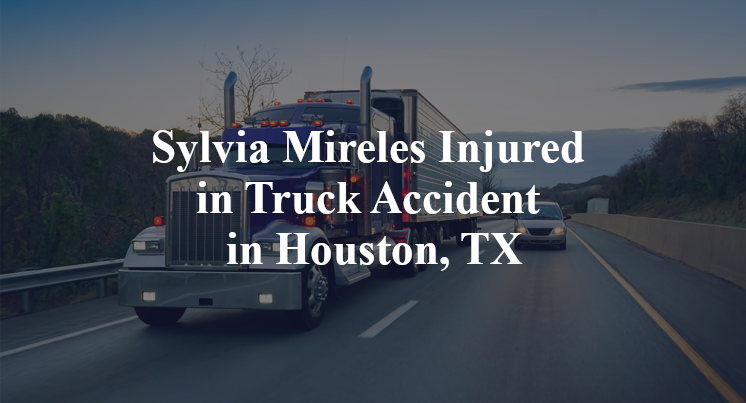Sylvia Mireles Injured in Truck Accident in Houston, TX
Houston, TX — October 8, 2025, Sylvia Mireles was injured in a truck accident just after 5 p.m. on Interstate 610/East Loop Freeway.
A preliminary accident report indicates that a northbound 1994 Freightliner semi-truck collided with a 2025 GMC Terrain, forcing it into the back of a 2021 Freightliner Cascadia semi-truck south of Interstate 10/East Freeway.

GMC driver Sylvia Mireles, 66, was seriously injured in the crash, according to the report.
The truck drivers were not injured, the report states.
Authorities have not released any additional information about the Harris County crash at this time.
Commentary
When people read that a woman was seriously hurt after her SUV got pushed between two semi-trucks, the natural reaction is to ask: How does something like that even happen? Was someone not paying attention? Could this have been avoided?
Those are the right questions to ask, but so far the official report doesn't give us the answers.
All we know is that a northbound 18-wheeler collided with a GMC Terrain on the East Loop, pushing it into the back of another semi-truck. That tells us a chain reaction occurred, but it doesn't explain what started it. Depending on whether the front truck was moving or stopped, the legal questions could look very different.
If the lead truck was stopped in traffic, for example, and the truck behind it plowed into the SUV with enough force to sandwich it between two big rigs, then that rear truck becomes the likely focus of scrutiny. But even that assumption needs proof.
Here’s what I mean: To truly understand who’s responsible, we’d need to look at black box data from both trucks, the one in front and behind. Those devices can tell us speed, braking, throttle position and even whether a crash avoidance system was working or disabled. In-cab cameras can also help us determine whether the driver was distracted, drowsy or otherwise inattentive at the time of the crash.
And what about the driver's background? Were they adequately trained? Had they been driving too many hours? Were there prior incidents the trucking company knew, or should have known, about before putting that driver behind the wheel?
I’ve handled cases where the deeper we dug, the clearer it became that a driver should never have been behind the wheel in the first place. In one case, we found that a driver had been fired from multiple jobs before being hired by a company whose idea of a road test was a 20-minute drive in broad daylight. That shortcut in vetting led directly to someone getting hurt.
The fact that both truck drivers walked away unharmed while the SUV driver was seriously injured raises another question: Were the trucks in motion or stopped at the time of impact? If they were stopped and a moving truck caused the impact, that points to a failure to maintain a safe following distance, something that should never happen with a fully-loaded 80,000-pound vehicle.
But right now, we’re left without those details. No cell phone records. No ECM data. No word on whether dash cams exist or what they show. Without that evidence, it’s impossible to know who should be held accountable, or how.
Key Takeaways:
- It’s not yet clear what triggered the chain-reaction crash that injured the SUV driver.
- Crucial evidence — like black box data, dash cam footage and cell phone records — will be key to determining fault.
- The condition and behavior of both truck drivers must be scrutinized, including their training and driving history.
- Depending on whether the front truck was stopped or moving, legal responsibility could fall on either or both truck drivers.
- Until a thorough investigation is done, no one can say with certainty who’s to blame.

“These are essential reads for anyone dealing with the aftermath of a truck wreck”– Attorney Cory Carlson